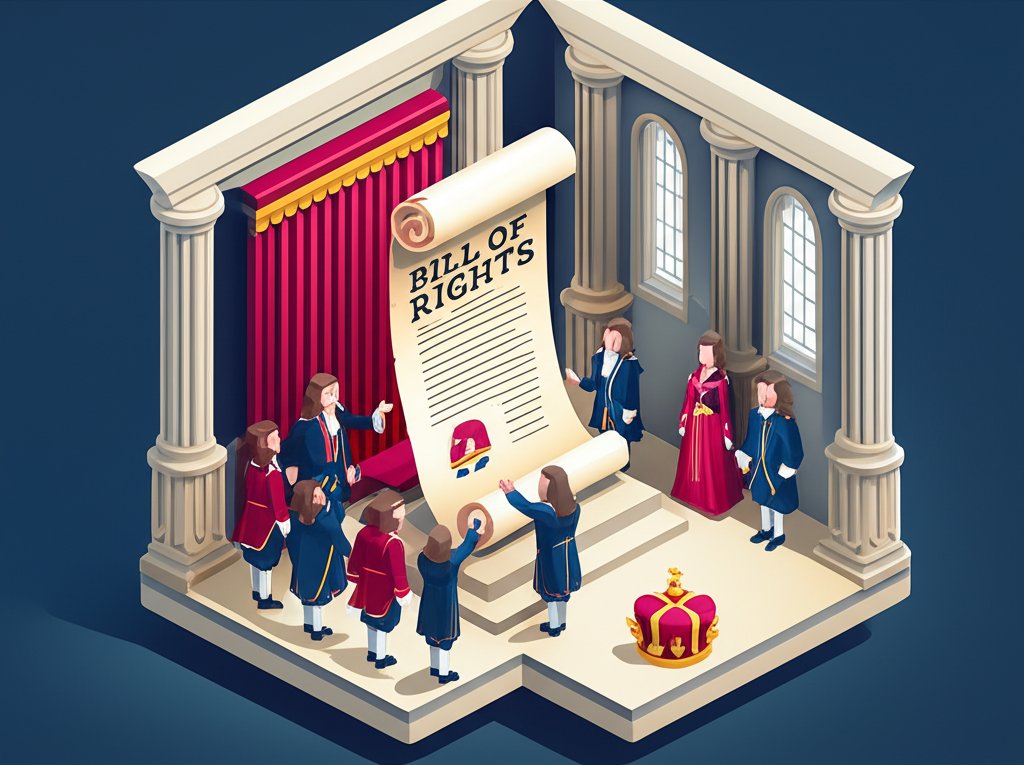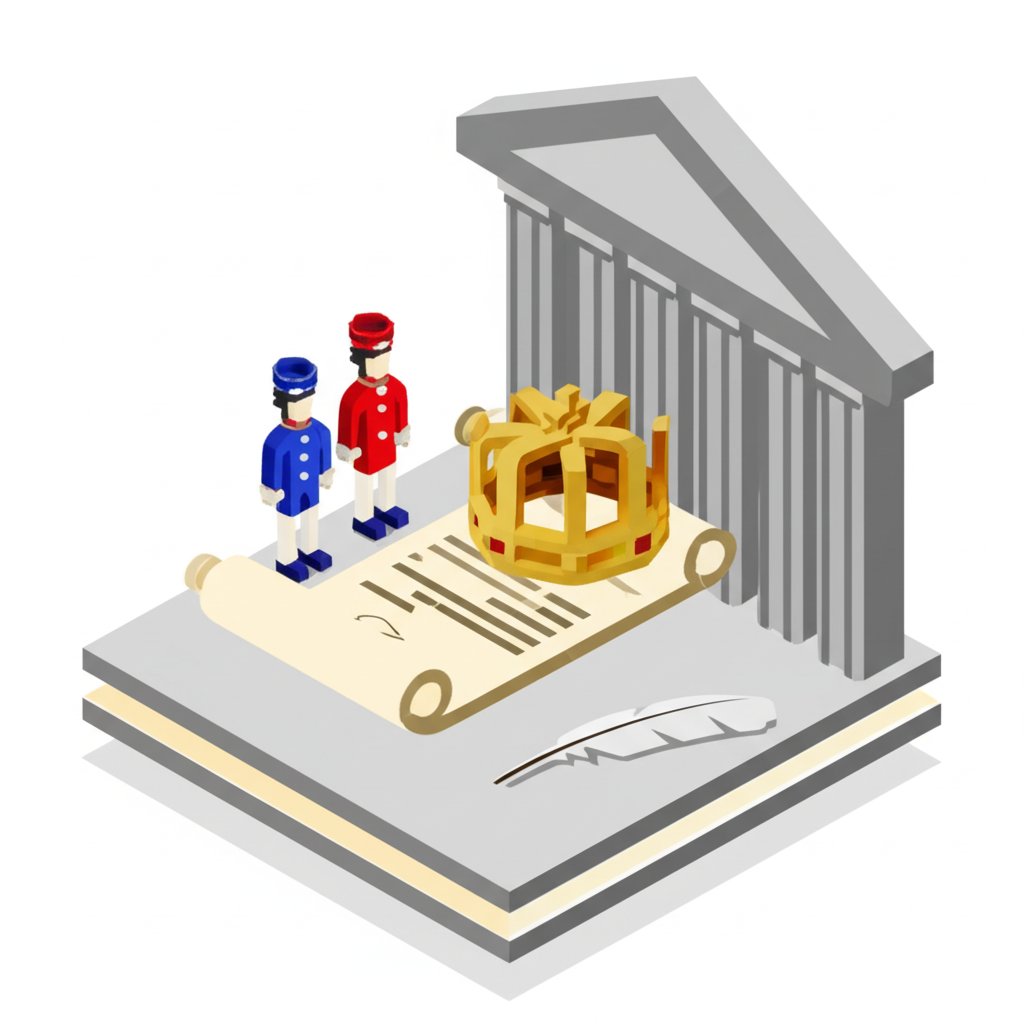The year is 1688. England stands at a precipice, teetering between an absolute monarchy and a burgeoning parliamentary system. What followed was not a brutal civil war, but a calculated, dramatic shift in power that would forever redefine the nation’s governance. Known famously as the Glorious Revolution, or more accurately, the 1688 Revolution, this pivotal moment saw Parliament decisively assert its authority, fundamentally reshaping the relationship between the Crown and its subjects. This article will delve into the intricate causes, key players, unfolding events, and profound consequences of the revolution of 1688 in England, demonstrating unequivocally that the Glorious Revolution of 1688 demonstrated that Parliament had become the supreme power.
Seeds of Change: Precursors to the 1688 Revolution in England
The revolution of 1688 was not an isolated event but the culmination of decades of religious and political tensions that had simmered beneath the surface of English society. The Stuart monarchy, in particular, had a contentious relationship with Parliament, fueled by deep-seated disagreements over power, religion, and the very nature of governance.
The Stuart Legacy: Absolutism vs. Parliament
For much of the 17th century, England was embroiled in a constitutional struggle between the Crown and Parliament. Kings like James I and Charles I believed in the Divine Right of Kings, asserting their absolute authority and often clashing with Parliament over taxation, foreign policy, and religious practices. This conflict famously escalated into the English Civil War (1642-1651), resulting in the execution of Charles I and the establishment of a republic under Oliver Cromwell. While the monarchy was restored with Charles II in 1660, the underlying tensions remained. Parliament, having tasted power, was unwilling to revert to a subordinate role. This historical backdrop is crucial to understanding why the 1688 revolution England unfolded as it did, with Parliament ready to act decisively.
James II’s Catholic Policies and Growing Alarm
The true catalyst for the 1688 Revolution came with the accession of James II in 1685. James, an avowed Catholic, inherited a deeply Protestant nation still scarred by memories of Catholic persecution and the Gunpowder Plot. Initially, there was a degree of grudging acceptance, as James promised to uphold the Church of England. However, his actions quickly eroded this trust:
- Open Catholicism: James II openly practiced his faith and attempted to promote Catholics to positions of power in the army, government, and universities, bypassing existing laws (the Test Acts) that barred them from public office.
- Declaration of Indulgence: In 1687 and 1688, James issued Declarations of Indulgence, suspending penal laws against Catholics and Protestant Dissenters. While seemingly promoting religious tolerance, many saw this as an abuse of royal prerogative, demonstrating his willingness to override laws passed by Parliament.
- Dissolving Parliament: James dissolved Parliament in 1687, frustrated by its opposition to his policies, further signaling his desire to rule without its consent, much like his father, Charles I. His attempts to pack Parliament with his supporters proved largely unsuccessful.
These actions fueled widespread fears among the Protestant majority that James intended to restore Catholicism as the state religion and establish a French-style absolute monarchy, mirroring his cousin, Louis XIV.
The Birth of an Heir: A Dynastic Crisis
The final, explosive spark that ignited the revolution of 1688 was the birth of James Francis Edward Stuart in June 1688. James II already had two Protestant daughters, Mary and Anne, from his first marriage. Mary was married to William of Orange, the Protestant Stadtholder of the Dutch Republic. Until 1688, the succession of a Protestant heir seemed assured.
The arrival of a healthy male Catholic heir instantly shattered this expectation. It meant the potential for a permanent Catholic dynasty in England, a prospect that terrified the nation’s political and religious elite. This event transformed simmering discontent into a full-blown crisis, compelling leading figures to consider drastic measures to protect the Protestant succession and parliamentary liberties.
The Invitation and William’s Calculated Gamble
With the birth of a Catholic heir, English grandees realized they had run out of options to contain James II’s perceived absolutist and pro-Catholic agenda through legal or political means. Their only recourse seemed to be foreign intervention.
The Immortal Seven and the Call to William of Orange
On June 30, 1688, a secret invitation, known as the “Invitation to William,” was dispatched to William of Orange. This document was signed by seven prominent Englishmen, comprising Whig and Tory leaders alike, who have since become known as the “Immortal Seven.” They pleaded with William to intervene militarily to protect English Protestantism and liberties, assuring him of substantial support upon his arrival. This invitation was not a call for conquest but for intervention to rectify a perceived constitutional crisis. It served as a critical legitimizing factor for William’s subsequent invasion.
Geopolitical Stakes: England, France, and the Dutch Republic
William of Orange was not a disinterested party. As Stadtholder of the Dutch Republic, he was deeply concerned by the growing power of Catholic France under Louis XIV, who posed an existential threat to Dutch independence. James II’s pro-French foreign policy and his attempts to build a powerful standing army in England were viewed with alarm by William.
William saw the turmoil in England as a strategic opportunity. By intervening, he could achieve several crucial objectives:
This was a calculated, high-stakes gamble driven by both internal English concerns and the broader geopolitical landscape of late 17th-century Europe. The revolution of 1688 thus had significant international dimensions.
The Revolution Unfolds: From Invasion to Abdication
Armed with the invitation and motivated by strategic necessity, William of Orange meticulously prepared his invasion. What followed was a swift, almost surreal unfolding of events that saw a sitting monarch effectively deposed without a major battle on English soil.
William’s Landing and James II’s Collapse
In November 1688, William of Orange landed his formidable Dutch expeditionary force, comprising around 15,000 soldiers, at Brixham in Devon. His march inland was met with surprisingly little resistance. Crucially, support for James II quickly evaporated. Key figures in the English establishment, including nobles, bishops, and even James’s own daughter Anne and his most trusted general, John Churchill (later Duke of Marlborough), defected to William’s banner.
James II, already deeply unpopular, found his army’s loyalty crumbling. Faced with widespread desertion and betrayal, he made two attempts to flee the country. The first was unsuccessful, but the second, in December 1688, saw him escape to France, where he was granted asylum by Louis XIV. James’s flight was a critical turning point, as it allowed Parliament to declare that he had “abdicated” the throne, rather than being explicitly deposed, which would have presented thorny legal and moral questions about regicide.
The Convention Parliament: Resolving the Succession
With James II gone, Parliament, reconvened as a “Convention Parliament” (as it wasn’t summoned by a monarch), faced the unprecedented task of settling the succession. After considerable debate, they formally declared that James II, by attempting to subvert the constitution and by fleeing the realm, had effectively abdicated the throne, leaving it vacant.
This declaration was revolutionary. It asserted Parliament’s right to determine the succession, overriding the principle of hereditary divine right that James II had championed. Parliament then offered the Crown jointly to William and Mary. However, this offer came with a crucial condition: they had to accept a Declaration of Rights, which explicitly outlined the abuses of power committed by James II and established clear limitations on royal authority. This moment unequivocally demonstrated that the Glorious Revolution of 1688 demonstrated that Parliament had moved from simply advising the monarch to dictating the terms of their rule.
How the 1688 Revolution in England Solidified Parliamentary Power
The crowning of William III and Mary II in April 1689 marked a seismic shift in English constitutional history. Their acceptance of the Declaration of Rights, which was then enacted into law as the English Bill of Rights, cemented Parliament’s newfound supremacy.
The English Bill of Rights (1689): A New Constitutional Framework
The English Bill of Rights is arguably the most significant outcome of the 1688 revolution England. This landmark document, passed in December 1689, codified the principles of parliamentary sovereignty and individual liberties, directly addressing the grievances against James II. Its key provisions include:
- No Suspension or Dispensing of Laws: The monarch could no longer suspend or dispense with laws without parliamentary consent. This directly curtailed a major tool of royal prerogative that James II had exploited.
- No Taxation Without Consent: Levying money for the Crown without grant of Parliament was declared illegal, reinforcing Parliament’s control over national finances.
- Freedom of Speech in Parliament: Members of Parliament were granted freedom of speech and debate, ensuring their ability to challenge the Crown without fear of reprisal.
- No Standing Army in Peacetime: Maintaining a standing army in peacetime without Parliament’s consent was deemed illegal, addressing fears of a monarch using military force to suppress dissent.
- Frequent Parliaments: Parliament was to be held frequently, ensuring regular accountability of the monarch.
- Right to Petition: Subjects were granted the right to petition the King.
- Protestant Succession: The Bill of Rights explicitly stated that no Catholic could ever ascend to the English throne. This was later reinforced by the Act of Settlement 1701.
These provisions fundamentally altered the balance of power, making the monarch subject to the law and accountable to Parliament. The revolution of 1688 was thus a constitutional revolution, not merely a change of rulers.
Limiting Royal Prerogative: Unprecedented Control
Before the 1688 Revolution, the monarch held significant “royal prerogative” – inherent powers not limited by statute. James II believed these powers were absolute. The Bill of Rights drastically curtailed these prerogatives. It established that the monarch ruled by the grace of Parliament, not by divine right.
This was an unprecedented assertion of parliamentary control:
This new framework meant that the Glorious Revolution of 1688 demonstrated that Parliament had effectively chained the monarch, transforming England from a potentially absolute monarchy into a constitutional one. This new system laid the groundwork for the modern parliamentary democracy seen today.
The Legacy of Parliamentary Supremacy
The principles established by the revolution of 1688 have had a lasting impact on English and, subsequently, British governance. Parliamentary supremacy became the bedrock of the constitution, meaning that Parliament is the supreme legal authority in the UK, with the power to create or end any law. While the monarchy remains, its role is largely ceremonial, with real power residing in the democratically elected Parliament. This fundamental shift from royal domination to parliamentary sovereignty is the enduring legacy of the 1688 Revolution.
The “Glorious” Misnomer: Conflict Beyond England

While often lauded as the “Glorious” Revolution due to the relatively bloodless transition of power within England, this label masks the severe and often brutal conflicts that erupted in other parts of the British Isles and beyond. For many, particularly in Ireland and parts of Scotland, the revolution of 1688 was anything but glorious.
The Williamite War in Ireland: A Bloody Aftermath
Ireland became the primary battleground for the deposed James II to reclaim his throne. With the support of Catholic Irish Jacobites (supporters of James), he landed in Ireland in March 1689, hoping to rally forces against William. This sparked the brutal Williamite War, a conflict steeped in religious and ethnic animosity.
Key events included:
For Ireland, the revolution of 1688 resulted in significant bloodshed, widespread destruction, and a century of severe religious and political discrimination that left a bitter and enduring legacy.
The Jacobite Rebellions in Scotland and Ireland
Beyond Ireland, James II’s supporters, known as Jacobites, continued to pose a threat. In Scotland, a significant number of Highlanders and some Lowland Episcopalians remained loyal to James. The “first Jacobite Rising” occurred in 1689, led by John Graham of Claverhouse, Viscount Dundee, though it met with limited success. Subsequent Jacobite risings throughout the 18th century, particularly in 1715 and 1745, continued to challenge the new Hanoverian succession (established after the Act of Settlement), demonstrating that the revolution of 1688 in England had far-reaching and often violent repercussions for decades across the British Isles.
The Enduring Impact of Religious and Political Divisions
The revolution of 1688 solidified the Protestant character of the English monarchy and, by extension, the British state. While this was seen as a victory for religious liberty by many Protestants, it led to intensified discrimination against Catholics, particularly in Ireland. The sectarian divisions sown during this period had profound and long-lasting consequences, shaping the political and social landscape of Ireland for centuries and contributing to recurrent conflicts. Therefore, while “glorious” for securing parliamentary freedom and Protestant succession in England, the term offers a limited and ethnocentric view of its true impact.
Lasting Impact and Global Reverberations
The revolution of 1688 transformed England’s political landscape, setting it on a distinct path of constitutional development that would influence nations worldwide. Its legacy extends far beyond the shores of Britain, shaping ideas of governance, rights, and the very nature of revolution.
From Absolute to Constitutional Monarchy
The most immediate and profound impact of the 1688 Revolution was the definitive shift from an absolute monarchy—where the monarch claimed unrestricted authority, often by divine right—to a constitutional monarchy. In this new system, the monarch’s powers are explicitly limited by a constitution (albeit an uncodified one in Britain’s case) and by the laws enacted by Parliament. The Crown became an integral part of “King-in-Parliament,” signifying that the monarch could only act with the consent and through the laws of Parliament. This foundational change established the principle of parliamentary sovereignty as the cornerstone of British governance.
A Blueprint for Rights: Influence on Future Revolutions
The English Bill of Rights (1689), a direct outcome of the revolution of 1688, quickly became an influential document. Its articulation of rights and limits on governmental power resonated with Enlightenment thinkers across Europe. Philosophers like John Locke, whose political theories provided a strong justification for the revolution, argued for government by consent and the protection of natural rights, directly influenced by the events of 1688.
Later, the principles enshrined in the Bill of Rights would serve as a crucial blueprint for democratic movements and constitutional documents around the globe.
Thus, the Glorious Revolution of 1688 demonstrated that Parliament had the power to redefine a nation’s foundational principles, inspiring future generations to seek similar changes.
The Financial Revolution and the Rise of Britain
Beyond constitutional changes, the revolution of 1688 also catalyzed what historians call the “Financial Revolution.” With Parliament now overseeing national finances, England gained a level of financial stability and credibility unmatched by its absolute monarchical rivals. The establishment of the Bank of England in 1694 and the creation of a national debt system, managed by Parliament, allowed the state to borrow vast sums of money at low interest rates. This financial strength was critical in enabling Britain to fund its wars against France and build a global empire in the centuries that followed. This economic transformation was a direct consequence of the trust and stability fostered by a monarchy whose power was now constrained by parliamentary oversight.
In summary, the 1688 Revolution was far more than a mere change of kings. It was a decisive moment when Parliament seized power, transforming the very fabric of English governance, setting a precedent for constitutionalism, and laying the groundwork for Britain’s future as a global power.
Conclusion: Parliament’s Enduring Triumph
The 1688 Revolution, often termed the Glorious Revolution, was a watershed moment in English history, irrevocably shifting the balance of power from the monarch to Parliament. Triggered by James II’s absolute ambitions, Catholic policies, and the birth of a Catholic heir, it culminated in the bloodless dethronement of a king and the conditional ascension of William and Mary.
This audacious power play definitively demonstrated that the Glorious Revolution of 1688 demonstrated that Parliament had become the supreme authority in England. Through the English Bill of Rights, Parliament established an indelible framework for a constitutional monarchy, curtailing royal prerogative, guaranteeing fundamental liberties, and ensuring the Protestant succession. While “glorious” for England, this period brought severe and bloody conflict to Ireland and Scotland, highlighting the complex and often brutal realities of such foundational shifts.
The legacy of the revolution of 1688 in England is undeniable: it laid the groundwork for modern parliamentary democracy, influenced constitutional thought worldwide, and set Britain on a path of financial and imperial dominance. It stands as a powerful testament to the principle that a ruler’s power is derived from the consent of the governed, exercised through their representatives in Parliament.
FAQ: Understanding the 1688 Revolution

What was the revolution of 1688?
The revolution of 1688, also known as the Glorious Revolution, was a pivotal event in English history where King James II was overthrown by a union of Parliamentarians and the Dutch stadtholder William of Orange. It resulted in the establishment of a constitutional monarchy and parliamentary supremacy.
Why is it called the “Glorious Revolution”?
It earned the name “Glorious” primarily because the transfer of power within England itself was achieved with relatively little bloodshed, especially compared to the English Civil War decades earlier. However, this “bloodless” narrative largely ignores the significant and brutal conflicts that followed in Ireland and Scotland.
Who were the key players in the 1688 Revolution?
The main figures were King James II (the reigning monarch), William of Orange (Stadtholder of the Dutch Republic and James’s son-in-law), and Mary II (James’s Protestant daughter and William’s wife). Key English Parliamentarians and nobles, collectively known as the “Immortal Seven,” also played a crucial role in inviting William to intervene.
What caused the 1688 revolution England?
The primary causes were King James II’s attempts to establish an absolute monarchy, his open Catholicism and pro-Catholic policies (which alarmed the Protestant majority), and the birth of a Catholic male heir in June 1688, which threatened to establish a permanent Catholic dynasty.
How did the Glorious Revolution of 1688 demonstrate that Parliament had power?
The Glorious Revolution of 1688 demonstrated that Parliament had ultimate power by:
What were the major outcomes or lasting impacts of the revolution of 1688?
The major outcomes included:










